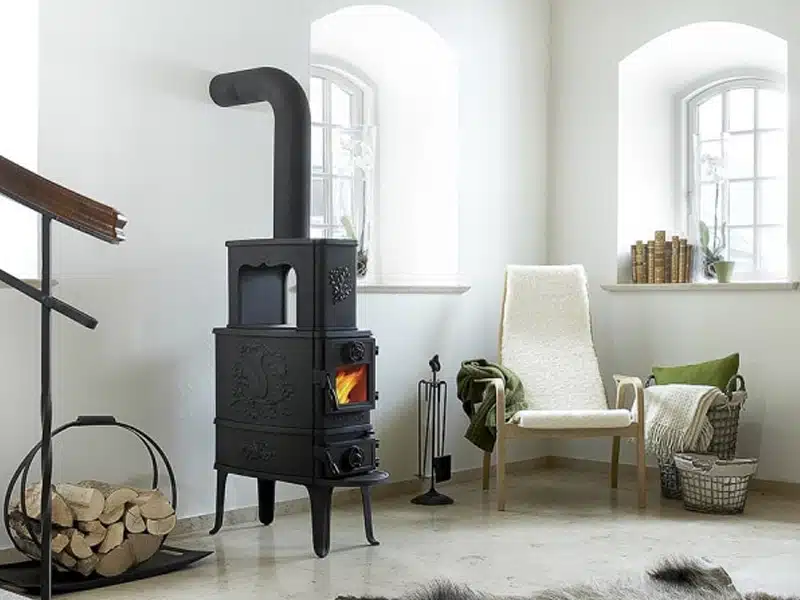As winter approaches, the picturesque landscape of Ontario turns into a frosty paradise, heralding the season of warmth, hot beverages, and gatherings near the fireplace. In the heart of many homes, wood stoves stand as a testament to traditional heating, offering both warmth and a comforting ambiance. However, to truly enjoy the benefits and ensure safety, it’s paramount to understand the intricacies of using a wood stove effectively. Whether you’re a seasoned log burner or a newcomer to this time-honoured heating method, these essential tips will help you cozy up to winter with confidence.
Introduction
For many Ontarians, the wood stove is not just an appliance but a cherished winter companion. It’s a source of solace from the biting cold and a centrepiece for family memories. Nevertheless, using a wood stove requires more than just lighting a match; it demands a mix of skill, awareness, and respect for the craft of fire management. This article delves into the key points to consider when using a wood stove to ensure you stay warm, eco-friendly, and safe during the chilly season.
1. Selecting the Right Wood
- Seasoned Firewood: Only burn seasoned, dry wood. Freshly cut wood contains a high percentage of water, which reduces its burning efficiency and increases creosote buildup in your chimney.
- Hardwood versus Softwood: Hardwoods like maple and oak provide a longer, hotter burn, while softwoods are easier to ignite but burn more quickly. A mix of both can be optimal.
2. Proper Installation and Maintenance
- Certified Installation: Ensure your wood stove is installed by a certified professional to comply with Ontario’s safety standards and building codes.
- Regular Maintenance: Conduct yearly inspections and cleaning of the chimney and stovepipe to prevent chimney fires and ensure proper ventilation.
3. Efficient Burning Techniques
- The Top-Down Burn: Start your fires with the top-down method—placing larger logs at the bottom and smaller pieces, along with kindling, on top. This technique results in a cleaner and more efficient burn.
- Airflow Management: Master the art of controlling your stove’s airflow to regulate the burn rate. Adequate air intake is crucial for efficient combustion.
4. Safety Precautions
- Fireproofing: Maintain a safe zone around the wood stove. Keep flammable items like furniture, drapes, and rugs at least three feet away.
- Smoke Alarms and Carbon Monoxide Detectors: Install and regularly test smoke alarms and carbon monoxide detectors in your home.
5. Fuel Efficiency
- Regular Refueling: Keep the fire burning at an optimal level by adding wood regularly rather than letting it burn down too low or smoulder.
- Insulation: Improve your home’s insulation to retain the heat generated by your wood stove, thereby reducing the need for constant refuelling.
6. Environmental Considerations
- Eco-Friendly Burning: Choose an EPA-certified wood stove that meets strict emissions standards to minimize your environmental impact.
- Responsible Wood Sourcing: Source wood from sustainably managed forests or use salvaged wood to ensure you’re not contributing to deforestation.
7. Efficient Heat Distribution
- Ceiling Fans: Use ceiling fans set on low and in reverse (clockwise) to help distribute the heat more evenly throughout the house.
- Heat Transfer Solutions: Consider installing heat-powered stove fans or passive heat distribution systems to move warmth to colder areas.
8. Cooking on Your Wood Stove
- Multi-functional Use: Some stoves come equipped with a flat top for cooking. Use this feature to boil water or cook, adding utility to your heat source.
- Cast Iron Compatibility: Use cast iron cookware for its excellent heat retention and even cooking properties, ideal for stove-top use.
9. Combustion Waste Management
- Ash Disposal: Dispose of ashes in a metal container with a tight-fitting lid and store it outside, away from any flammable materials, until completely cool.
- Ash Utilization: Consider using the ashes as a garden fertilizer or a traction aid on icy walkways, ensuring they are fully extinguished first.
10. Educate Yourself and Your Family
- Operation Knowledge: Ensure that all potential operators of the wood stove in your household understand how to use it safely and efficiently.
- Emergency Readiness: Have a fire extinguisher accessible and make sure everyone knows how to use it. Practice fire escape plans regularly.
Frequently Asked Questions:
-
A1. It’s best to burn seasoned, dry hardwoods for a longer, hotter burn. Avoid using green or wet wood as it can create excessive smoke and creosote.
Conclusion:
A wood stove is a delightful feature in any Ontario home, but it demands respect and responsible handling. By following these essential tips, you’ll be able to maximize the efficiency of your wood stove and enjoy a safe, warm, and environmentally conscious winter. Remember, preparation is key when it comes to home heating—starting with the type of wood you burn to how you distribute heat across your space. With these points in mind, you’re well on your way to mastering the cozy art of wood stove maintenance and usage.
Are you ready to embrace the winter chill with the soothing crackle of a wood stove?
If you have questions or need professional assistance, don’t hesitate to Contact us today!
- Name: Hearth Stone House Of Fire
- Address: 16 Talbot Street West Cayuga, Ontario, N0A 1E0
- Phone: 905-772-0779
- Email: hearthstone@rogers.com
- Website: HearthstoneHouseOfFire.com
Ignite your comfort with Hearthstone House Of Fire—we’re your key to a warmer home!





